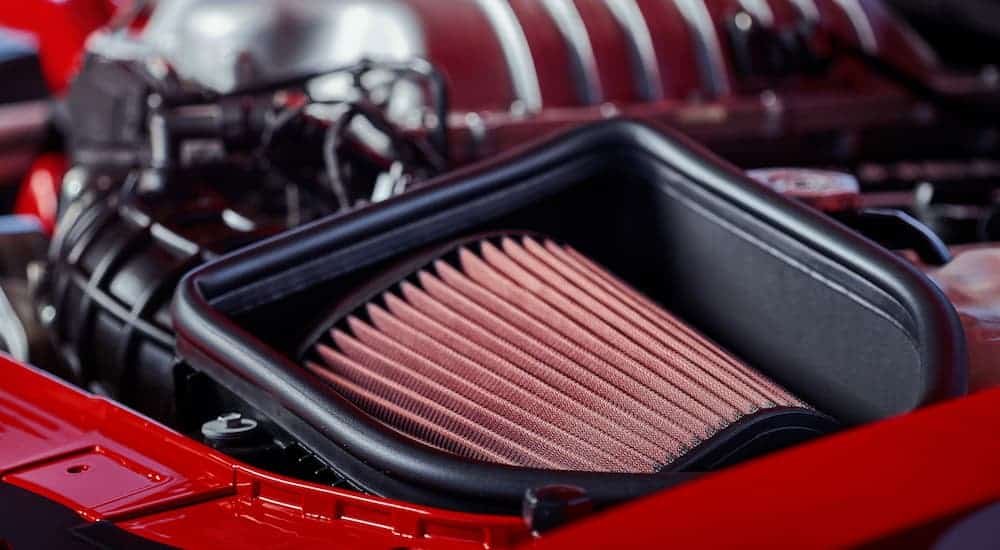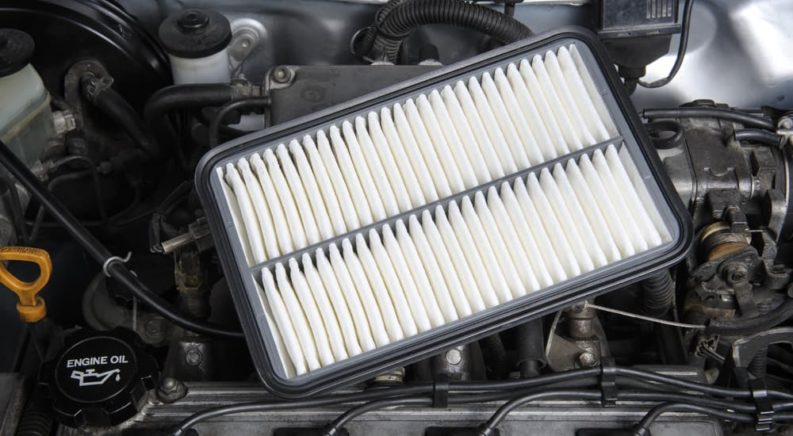When it comes to vehicles, there are many smaller parts that seem rather simplistic and unimportant on the surface but are actually very important for keeping a vehicle running. These minor parts are often overlooked by the average vehicle owner, which can lead to some preventable issues. One of the things often overlooked, but essential component, is the air filter. An air filter is an object that moves tiny particles of matter and any other sorts of impurities from the air. They are extremely easy to replace if you know what you are doing, and doing so regularly can keep your vehicle’s engine clean and running properly.
Internal Combustion Engines (ICE) rely on a steady supply of air being pumped into them to operate; however, the air outside is not always the cleanest and can often contain particles that would be harmful. The air filter is able to sift-out all of the harmful materials, while still allowing air to pass into the engine. There are many different types of air filters available for vehicles, and figuring out which one is required for your vehicle as well as how often it needs to be changed is a great way to ensure your engine lasts long and is as powerful as possible.
What is an Air Filter?
Essentially, an air filter is a component made of a breathable material which can capture contaminants and microscopic particles in the air. For the first few decades of the production of automobiles, they had no air filter and contained a very simple and straight-forward intake system. This caused many issues with the engines of the vehicles, as they did not last very long.ICEs rely on air for oxidization in the fuel-burning process, and contaminants can damage both the vehicle’s intake and the engine itself.
In 1915, the first vehicle shipped with an air filter, and since then it has become standard practice for all vehicles. Vehicles actually possess two separate air filters, one for the engine itself and one for the cabin. Both of these will need to be monitored and replaced; the engine filter will probably be replaced more than the cabin one. Since their inception, air filters have gone through a number of changes, from shape and size to even the materials they are made of.

Types of Air Filters
Nowadays, they can be made from a variety of different materials such as paper, cotton, or foam. The most common material you will find available is paper, but it is not like a standard piece of paper. They use specific types of wood pulp, which create a very porous material that is heavier than regular cardboard.
These are often “pleated” (folded heavily) to maximize the amount of surface area the filter has to work with. These filters are typically designed to be replaced after they become clogged. Cabin filters are usually made from paper as well, but they are typically less-porous and capture even smaller materials, as the amount of air intake is not nearly as important for the cabin as it is in the engine.
Cotton air filters are usually aftermarket products, as most car makers would prefer to use paper due to the cost. While cotton filters are pricier, they last longer and offer better engine performance than a standard paper filter. They are treated with oil, which helps trap particles without restricting airflow through it. They can also be rinsed off and retreated with oil, making them reusable.
Foam filters are similar to cotton filters; however, they utilize foam instead of cotton. They are also treated with oil and can be replaced, and can be designed specifically for engine performance or for heavy-filtration. Due to their ability to capture a lot of dirt makes them very popular for off-road performance vehicles.
Cold Air Intake
When it comes to engine performance, air filters can actually be a bit of a hindrance. While they are very necessary in order to keep your engine clean and contaminant-free, a plugged-in air filter can also restrict the amount of airflow that the engine is receiving, which can decrease the amount of power the engine is able to generate. While the decrease in power is negligible for the average vehicle owner, it can make a huge difference to the more performance-minded crowd, where any slight variation in horsepower could make a difference. Luckily for this group, there exists certain aftermarket options which are designed to maximize a vehicle’s power.
One of these possible options is a cold air intake. This is a system of components that are designed to deliver cold air directly to a vehicle’s engine. It is made up of a few different parts, namely a long metal or plastic tube and a cone-shaped air filter. The tube is much larger in size than the standard intake and allows a lot more air to travel to the engine, while the filter is left open to the air and is shaped to allow maximum intake. Most of the higher-end cold air intake systems also come with a large box that surrounds the filter, which helps funnel more air into the intake.

There is a number of different advantages that can come from installing a cold air intake system in place of a standard air filter. For one, the cold air intake system allows much more air to flow into the engine. It has a larger and more powerful intake, which sucks in a lot more air. With more air flowing to the engine, the engine is able to oxidize the burning fuel quicker, which increases the amount of horsepower the engine is able to put out. Cold air intakes also move the air filter outside of the engine compartment itself. This allows for the filter to take in colder air from the outside. Cold air contains more oxygen, an extremely necessary component in the process of oxidization. With more oxygen being supplied to the engine, the rate of combustion increases, which further increases total power output.
A good way to visualize the difference is to think of trying to exercise while having sinus congestion. You can still breathe while being congested; however, the amount of air traveling through your nostrils is drastically decreased. This is not unlike a standard air filter, which works well but cuts down on the total amount of oxygen being taken in. The cold air filter, on the other hand, would be like a nasal spray that clears up your sinuses. It maximizes the amount of air that you can inhale through your nostrils, and more air is always a good thing when it comes to physical exercise.
Your Vehicles Air Filter
Vehicles contain many different components, all of which play some sort of role in their operation. While many of these parts seem small and insignificant, even the smallest thing can make or break a vehicle. One of these small but necessary components is the air filter. This is an object that filters out any contaminants from the air leading into the engine, which keeps the engine clean and particle-free. Whether you have a standard air filter or a more performance-oriented cold air intake system, the filter should be checked from time to time, and cleaned/replaced if necessary. A good air filter will ensure that your engine is as healthy as possible, and a healthy engine is a good thing indeed.

